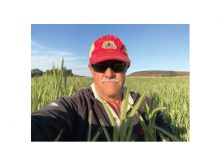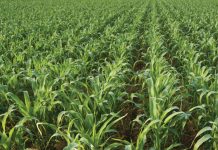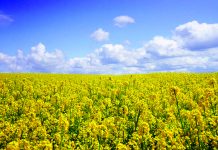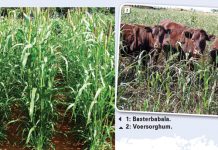
SA Graan/Grain
contributor
‘Without soil we would go hungry. Do we ever spare a thought for our soil? To us, soil is merely soil and that is it. Most people take soil for granted, yet soil is just as necessary to sustain life on earth as air and water,’ says Ms Marina Möller-Eilers in her educational booklet called Soil Blanket, dedicated to the legacy of Jack Human (1950 – 2015).
She confirms that soil is the source of subsistence – the basis of most fundamental nutrients. Plants grow in soil, animals eat plants and humans eat plants and animal products – directly or indirectly derived from the wonder of soil.
Nitrogen, phosphorus and potassium are as important to a plant as ‘meat, bread and vegetables are to humans’, according to Möller-Eilers. These nutrients are absorbed via the roots of the plant. Nitrogen aids plants with photosynthesis, phosphorus is important for flowers and consequently seed and fruit production, while potassium nourishes roots. For these to be produced naturally, the best possible soil health needs to be sustained.
Experience from the USA
With an imperative focus on regenerative agriculture and sustainability through farming in harmony with nature, Prof Buzz Kloot from the University of South Carolina in the United States of America (USA), introduced Mr Jason Carter to South African producers at the Regenerative Agriculture Conference presented by Landbouweekblad in conjunction with the Riemland Study Group, Ottosdal No-till Club, Grain SA and the Soil Health Support Centre at respectively Reitz, Ottosdal and Joostenbergvlakte.
Jason farms in the centre of South Carolina, a state on the southern east coast of the USA. He shares what he has experienced on his farm over the past years – on the way towards a more sustainable grain and specifically maize production system.
Conservation farming versus regenerative farming
According to Jason some land owners consider no-till as conservation farming. ‘Just minimum tillage or straight no-till really do not address that. It is a step towards regeneration, but you need to take a couple of steps further to really regenerate the soil. Regenerative farming has more to it. We focus on the carbon in the organic matter in the soil. We introduce cover crops and often bring in livestock to bring the soil biology back to life.’
Jason farms with maize, cotton and soybeans on about 8 030 acres (3 252 ha). He also does some work for a neighbour – taking it to 4 000 ha in total.
He confirms that they implemented solid regenerative principles about seven years ago. It has been 20 years since he quit any type of tillage on the farm and ‘went to just strip-till’.
‘We noticed our organic matter was not changing. Seven years ago, we decided to start with cover crops. There was not much information and I started working with Prof Kloot. After planting our first cover crops, we started to track the organic matter changes in the soil. Since then we have been seeing about two tenths of a percent increase every year. We increased the organic matter in our soils from about 0,6% to about 1,8%,’ says Jason.
He adds that they have cut back on the phosphorus, potassium and on all synthetic fertilisers and pesticides. ‘That is the biggest step to get the biology back in the soil,’ he says.
Jason emphasises that it is necessary to reduce the use of synthetic fertilisers and pesticides, since they are detrimental to soil microbiology. Regenerative agriculture is a much more sustainable system.
Cover cropping
He explains that they plant the multi-species cover crop at the end of the summer. It grows throughout autumn, winter and the first part of spring. They plant maize directly into the green cover crop and then spray herbicide directly after planting. With the cotton and soybeans they terminate the cover crop about 30 days earlier, because they need to have enough moisture later in the hot growing environment for germination.
Preferred cover crop mix selections on Jason’s farm currently include about four to five, but he plans to expand to more cover crops soon. ‘We need to be at around eight. I think that is one of the mistakes we have been making. Almost all the mixes have rye in it, clover, vegetables, radish and we are experimenting with some lupine this year, but we need to bring in some more species. Since we do have rye as a grass species, bringing in oats or anything else in the grass family will do.’
Benefits
Jason says they have cut their insecticides by at least three quarters of a percent. ‘When we first started with the cut-back of inputs, we expected a yield decrease. However, we have found that our yields are staying the same. Every year we try to trim our inputs and our yields are staying the same. That just goes to show the benefit of diverse soil rotation with crops and cover crops when you regenerate and bring the biology back to the soil.’
He compares his commitment to regenerative farming to the reality of forests as the prime example of how nature is functioning optimally. ‘There is no one out there spraying the forests and fertilising them, yet the trees grow well and produce fruits for the wildlife. It is the same with our soils. If we have healthy soils teamed with biology, they can support the plants.’

A definite ‘yes’
He says that he would most definitely recommend regenerative maize production for South African conditions. During his visit here he saw that a lot of the problems South African producers have, are similar to what they experience. However, compared to the Southeast, South Africa has a drier environment and moisture is probably a bigger concern here than in his area. In other areas in the USA they have the same moisture concerns. He still thinks that bringing the cover crop into the mix is a definite ‘yes’. There might be some challenges with the dry environment, but there should be benefits as well – even in a drier location.
‘Some producers in our area do have the advantage of having irrigation. They can plant maize, cotton or soybeans later into the season because of that. A lot of producers do not have this advantage. So, I would say that the moisture concerns from what the cover crop can take in a dry environment when it is time to plant, could be a problem.’
Quantifiable results
Jason states that the proof of the pudding lies in results, which can be converted into monetary savings and potential yield increases. These need to be calculated in relation to direct costs.
On his farm he has seen, in relation to the surface planted, that an investment of $25 (R370,00 at a R14,80 exchange rate) in cover crops, was realising savings of about $100 (R1 480,00) per acre in synthetic nutrient inputs, insecticides and pesticides.
‘It is a huge saving and we are maintaining the same yield. I think we have pushed our crops to the limit of the yield. From now on our savings are going to be from what we can cut back while maintaining the same or increased yields,’ says Jason.

















